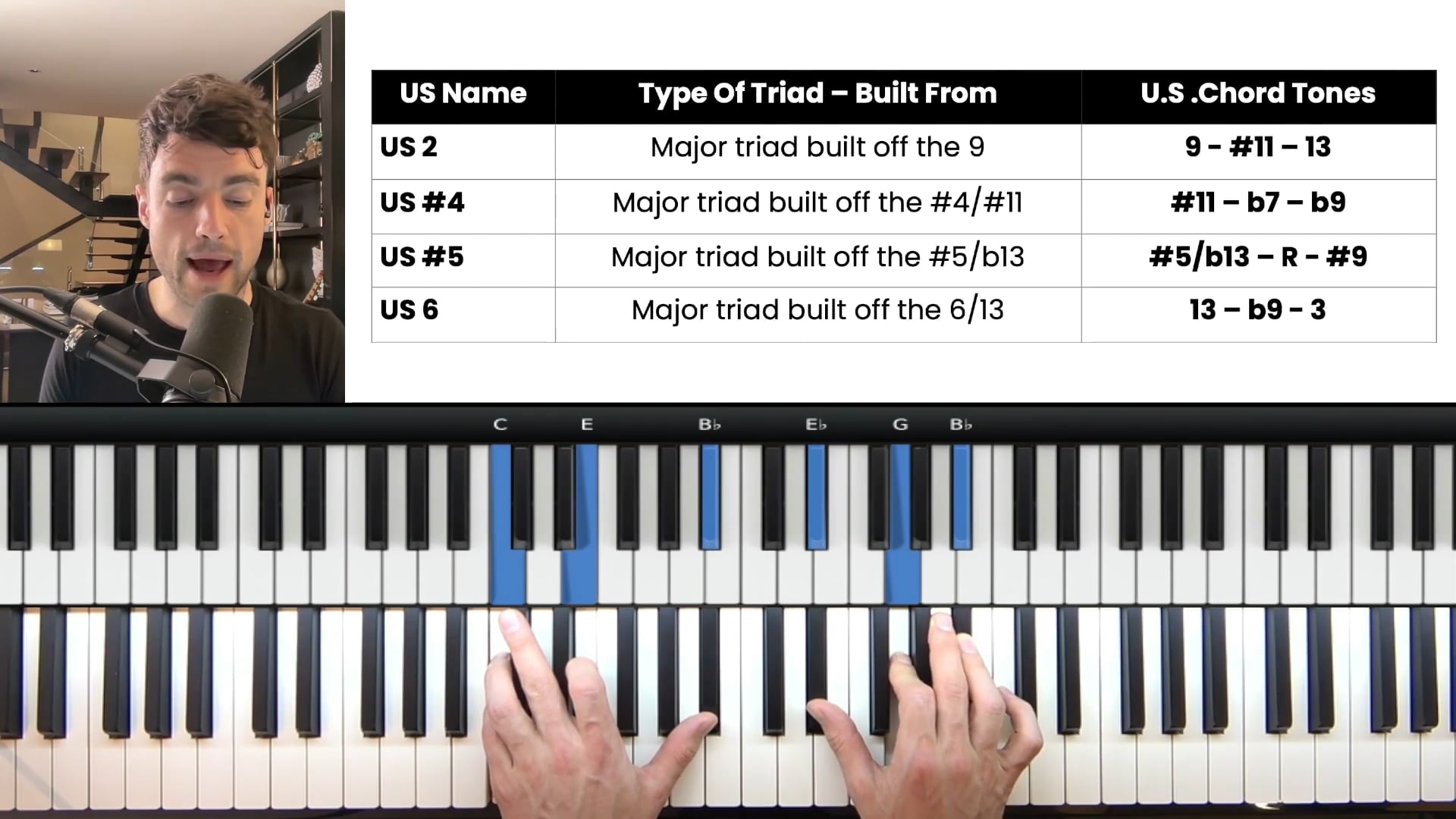

Hayden Hill
Hayden founded PianoGroove in 2015 with the goal of making the world a more musical place. He shares his love for jazz piano through his online courses and manages the community area of PianoGroove.
Live Seminar Resources
Live Seminar Resources
PDF Downloads
- Tenderly - Chord Chart
Join PianoGroove Pro to access all downloads and learning resources.
Download theory supplements, midi files, chord changes and full note-for-note transcriptions of every lesson.
- Days Of Wine & Roses - Chord Chart
Join PianoGroove Pro to access all downloads and learning resources.
Download theory supplements, midi files, chord changes and full note-for-note transcriptions of every lesson.
- Moonlight In Vermont - Chord Chart
Join PianoGroove Pro to access all downloads and learning resources.
Download theory supplements, midi files, chord changes and full note-for-note transcriptions of every lesson.
- UST Cheat Sheet
Join PianoGroove Pro to access all downloads and learning resources.
Download theory supplements, midi files, chord changes and full note-for-note transcriptions of every lesson.
Related Lessons
Forum Threads
Seminar Description
Seminar Description
Upper Structure Triads for Jazz Piano
Understanding Upper Structure Triads
Upper structure triads are a powerful tool for jazz pianists looking to add sophisticated harmonic colors to their voicings. In this lesson, we explore how upper structure triads function, their common applications, and how to integrate them into jazz standards effectively.
Upper structures involve playing a 7th chord in the left hand while adding a triad in the right hand. This approach simplifies complex voicings by organizing them into familiar triadic shapes. While upper structures can be applied to various chord types, they are most commonly used over dominant 7th chords to introduce extensions such as the 9th, sharp 11th, and 13th.
Applying Upper Structures to Dominant Chords
A key step in mastering upper structures is identifying the melody note and relating it to the dominant chord. By recognizing which scale degree the melody note represents, we can select an appropriate upper structure triad.
For example, over a C7 chord, we can apply:
- Upper Structure 2: A major triad built on the 9th (D major over C7).
- Upper Structure #4: A major triad built on the sharp 11 (F# major over C7).
- Upper Structure #5: A major triad built on the sharp 5 (Ab major over C7).
- Upper Structure 6: A major triad built on the 13th (A major over C7).
Each triad provides a different color, from smooth, airy voicings to more dissonant, tension-filled harmonies.
Upper Structures in Jazz Standards
To reinforce our understanding, we apply these concepts to jazz standards such as "Tenderly", "The Days of Wine and Roses", and "Moonlight in Vermont."
When encountering a dominant chord in these tunes:
- Identify the melody note and determine its scale degree.
- Choose an upper structure that includes that melody note.
- Invert the triad so that the melody remains the highest note.
- Play the voicing while ensuring smooth hand positioning and comfortable spacing.
For instance, in "Tenderly," we encounter an Ab7 with the melody note D (sharp 11th). Using Upper Structure 2, we play a Bb major triad over Ab7, creating a lush 13#11 voicing. The Bb major triad is played in its second inversion to keep the melody note intact.
Simplifying Complex Voicings
One of the advantages of upper structure triads is that they condense intricate harmonic information into a manageable form. Instead of thinking in terms of all individual chord tones (e.g., root, 3rd, 7th, 9th, sharp 11th, 13th), we can simplify our approach by recognizing a single triad shape.
For example, a D major triad over C7 provides:
- D (9th)
- F# (sharp 11th)
- A (13th)
By practicing these shapes in all 12 keys, pianists can develop fluidity in applying upper structures across different musical contexts.
Practice Tips for Mastering Upper Structure Triads
- Identify Common Melody Notes – Recognize that 13ths and sharp 11ths frequently appear in jazz melodies. Knowing this can help you anticipate which upper structure to use.
- Learn the Four Primary Upper Structures – Memorize the major triads built off the 9th, sharp 11th, sharp 5, and 13th. These four formulas will cover most dominant 7th chords.
- Use Inversions for Smooth Voice Leading – Always ensure that the melody note is the highest note in the upper structure triad by inverting as necessary.
- Apply to Jazz Standards – Instead of practicing in isolation, apply upper structures directly to real tunes. This solidifies the connection between theory and performance.
- Experiment with Arpeggiation and Voicing Variations – Upper structure triads can be played as block chords or broken into arpeggios for melodic fills and runs.
By internalizing upper structure triads, you will expand your harmonic vocabulary, enabling richer and more expressive jazz piano performances.








This has been helpful. I started out with classical piano lessons and quit altogether many times over the years. I am a senior citizen now and I am fascinated with jazz chords. This is a hobby and a way to keep my brain growing. I like the upper structure charts.
Thanks! Very interesting